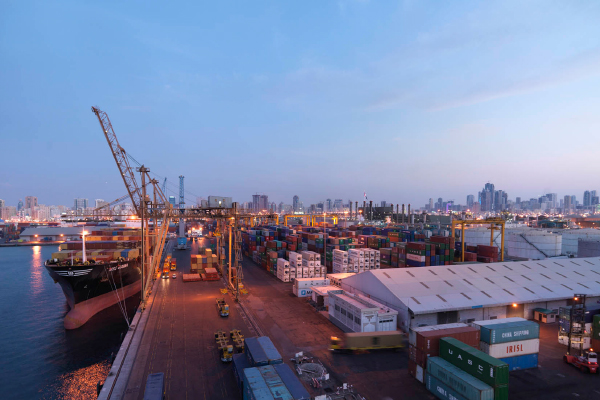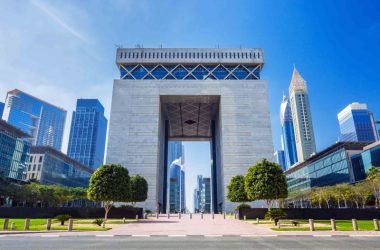With ports in the Middle East, United States and South America, the expectations of Gulftainer’s customers stretch even further than the port and logistics company’s operations. After huge expansion plans were initiated in 2012, Group IT Manager, Vinay Sharma, was tasked with bringing outdated IT infrastructure up to the company’s high standards. 
Although employee loyalty and strong heritage often stand the test of time, the same cannot be said of technology. Formed in 1976, Gulftainer has had a long-established presence in the UAE as well as a stable and consistent culture, with the average tenure among the company’s 4,000 employees at 10 years. “The DNA of the company remains,” Sharma says. “We’re very people-focused and that’s certainly a key strength.”

In 2009, the company’s focus began to shift beyond the UAE. As senior management explored opportunities for international growth, the IT department was kept on standby to install a range of comprehensive enhancements to the company’s IT infrastructure. “Things were getting bigger; at one point we had a ship with 19,000 containers at our port in Khorfakkan,” Sharma says. By 2012, he had been given a brief to lead a major overhaul of Gulftainer’s outdated IT. “We had no common platform for a number of things, no address book for instance,” he says. “We had 10 different domains across offices. Our customers demand end-to-end delivery of containers, so IT and processes need to be aligned. Data management and security performance would have to be upgraded.” Sharma is quick to add that these changes were far from a techie’s indulgence. “Although our work is IT-related, we have not created an IT roadmap; this is all part of a business roadmap,” he says.
A key component would be the quality of the internal network on offer for employees. This would have a direct effect on outside relations, Sharma says. “Whatever services an organisation is offering, you need a backbone that gives you basic IT stability. You need to be able to provide seamless services for external stakeholders.”
Given the large scale of the upgrades, a clear oversight of the project was a must. “There were a range of objectives that we had to achieve,” Sharma says. “We needed a robust infrastructure for the growing business needs. We needed process standardisation. We needed unified communications. We had to ensure our infrastructure was agile so we could cope with mobility; on-the-go business and the provision of e-services. Most importantly, we had to create competitive business advantage to provide value-added services to customers.”
With the wide selection of changes that were needed, Sharma underwent a series of RFPs to see which vendors could provide the most suitable infrastructure for Gulftainer. The company’s endpoints stretched across 11 floors of its new offices, so bandwidth and availability requirements were heavy. Sharma opted for solution guidance from interconnector firm Molex, creating a 10 gigabit Ethernet backbone, with a redundant category 6A solution, and flows interconnected with an optical fiber. A main consumer of the new bandwidth would be SAP HANA, which would take on great importance for the firm. “Gulftainer’s senior management need a 360 degree analysis of data with real-time reporting, so this would be a major addition for us,” Sharma says.
Sharma enlisted Avaya as a provider for IP telephony, which would enable the company to connect systems across different company buildings. Backbone Cisco core and edge switches, a four layer IBM blade server set- up, and over 70 VMware virtual servers were also installed. With licenses having been a previous challenge for Gulftainer, Sharma inked a Microsoft Enterprise agreement to allow the company to move flexibly between software updates. From a security perspective, Gulftainer had faced an increasing number of targeted attacks, so Sharma selected Trend Micro’s Enterprise Security Suite and Fortinet’s Fortigate firewall in the hope of shoring up defences.
In terms of Gulftainer’s on-the-ground operations, as well as the need for requisite infrastructure to streamline operations, it was also important to optimise the firm’s TOS – terminal operating system. Sharma decided to implement Tata’s Mach solution in a “system-driven” selection process. With mobility an important part of the solution to ensure swifter communications and delivery of service between staff, the IT team organised 20 workshops between service providers and business users.
Getting users across the business to accept changes proved a challenge. Although senior management had been the instigators for the changes, they, along with general business users, took time to be convinced of the merits and ease of the new technology. “We ran internal awareness programmes, gave our technical staff external training courses, and were given separate training from the vendors,” Sharma says. “There is no big bang when it comes to introducing technology and process change. You have to align the two and complete them in stages. The move from on-premise to cloud, for instance, takes time.”
Patience has been needed throughout the introduction of the new changes, but Gulftainer has already felt a number of large benefits. With the overall infrastructure update still taking place, Sharma is able to draw great satisfaction from the work, which has saved the company well over $500,000 over the last three years, with 100 projects completed in that time. The company’s infrastructure is now unrecognisable compared to its original state, and is equipped to support Gulftainer’s expanding operations. “We have ports in Lebanon, Brazil, three in Iraq, Russia and Jeddah,” Sharma says. In addition to these bases, the company is now the first Middle Eastern firm with a UAE presence to be also running operations in Florida.
The introduction of a centralised email exchange server – combining IBM, Microsoft and Cisco products – has provided a common platform for communication, while Polycom’s unified communications technology has facilitated long-distance meetings.
The enhancements to Gulftainer’s network have resulted in a higher level of availability, as well as a vast reduction in downtime, of which there has been none for six months. “Beforehand we had suffered damaging spells of downtime for two to three years,” Sharma says. “Eradicating that has been a massive value-add for on-the-ground operations.”
Another tangible saving that Gulftainer has made is through the use of managed print services, which previously accounted for roughly an $8,000 monthly expenditure. “This has also helped us to reduce our carbon footprint, so it’s a fantastic change,” Sharma says. An additional boost in that respect has been the introduction of the 70 virtualised VMware servers, which has cut back on the cost of physical servers as well as saving energy. Following these drastic changes, Gulftainer has finally achieved the quality and breadth of IT that a company of its strong heritage deserves.





